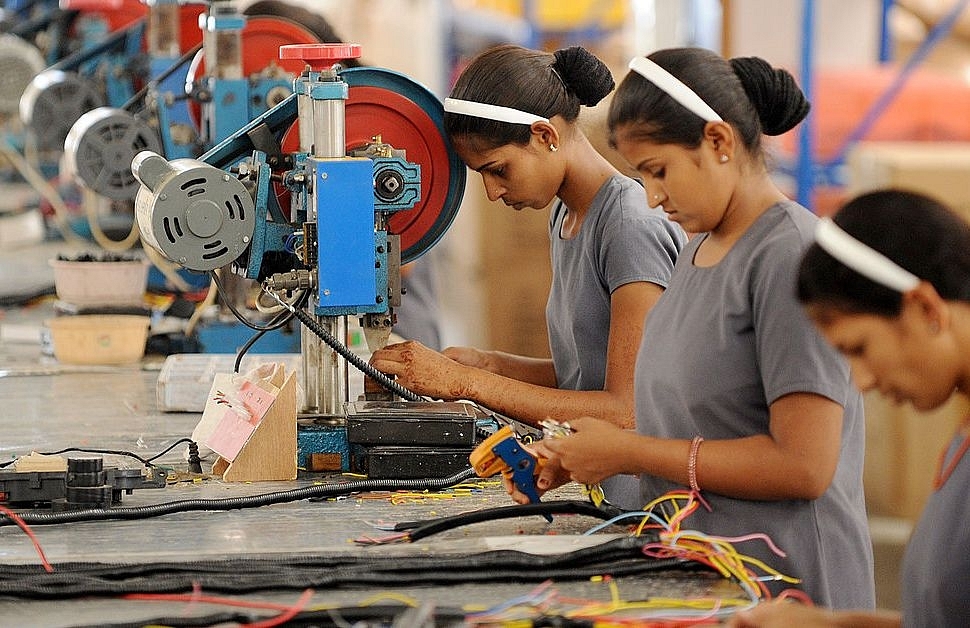Insta
Composite PMI Shows India’s Private Sector Activity Still Falling But Pace Of Decline Slows

India manufacturing jobs (SAM PANTHAKY/AFP/GettyImages)
The IHS Markit India Composite Purchasing Managers Index, a snapshot of conditions in both the manufacturing and services sectors, came in at 46 in August, up from 37.2 in July.
The index, which is a gauge of month-on-month changes in private sector activity, indicates expansion when the reading is above 50 and contraction below it. August is the fifth consecutive month of contraction in private sector activity in the Indian economy, although the pace of decline has slowed.
PMI readings show the change from the previous month, which means that even if they show a reading above 50, all it indicates is that activity has rebounded from the depths plumbed in the earlier month and it’s still a long climb back to the level the economy was at before the contraction started in April 2020.
As we had pointed out, the PMI for manufacturing showed a mild bounce after four months. The services PMI in contrast, was at 41.8 in August, better than its 34.2 reading in July, but indicating a further decline from the previous month, albeit at a reduced pace.
The services survey said, ‘the fall in output was linked to a further weakening of demand conditions during August, while some businesses remained closed as a result of ongoing lockdown restrictions. The rate of contraction in output was solid overall, despite easing from the previous survey period as some firms gradually resumed operations.’
With many services requiring person-to-person contact, it’s not surprising that the downturn in the sector has been more severe than in manufacturing. That is also why, while Indian manufacturers were optimistic about the next twelve months, two-thirds of respondents in the services sector said they expected output in the year ahead to remain at current levels in the year ahead.
The local lockdowns continued to have an impact, with backlogs of work in the services sector rising to the highest in 15 years. In the manufacturing sector too, the survey said ‘Supply chains were disrupted for a sixth consecutive month, with firms citing transportation restrictions, supplier delays and capacity pressures as the main drivers of lengthening delivery times.’
One concern is the continued fall in employment levels in August, which is likely to affect future demand. While input costs increased, the rise in output prices was marginal, which should provide some comfort to the central bank.
Support Swarajya's 50 Ground Reports Project & Sponsor A Story
Every general election Swarajya does a 50 ground reports project.
Aimed only at serious readers and those who appreciate the nuances of political undercurrents, the project provides a sense of India's electoral landscape. As you know, these reports are produced after considerable investment of travel, time and effort on the ground.
This time too we've kicked off the project in style and have covered over 30 constituencies already. If you're someone who appreciates such work and have enjoyed our coverage please consider sponsoring a ground report for just Rs 2999 to Rs 19,999 - it goes a long way in helping us produce more quality reportage.
You can also back this project by becoming a subscriber for as little as Rs 999 - so do click on this links and choose a plan that suits you and back us.
Click below to contribute.
Latest